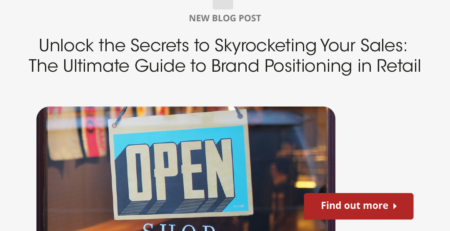12 Ways to Make Your Website More Interesting
In the modern day, it is almost impossible to attract potential employees or a potential employer unless you have an interesting website.
A boring or incomplete website can actually cause your business to lose out on top talent.
Want to ensure you can attract a position or employee using your website? Read on to learn more about the ways you can make your website more interesting.
Why You Need an Interesting Website
Whether you are a business or a freelancer, you need a website. A website is the modern-day artist’s portfolio where you can show off all of your work or the success of your business.
As a freelancer, having a website makes it easy to add a link to a job application to show off your work. This is much easier than trying to attach samples individually or trying to include them in your CV.
As a business, there are several reasons you should have a website. One of these reasons is that having a website gives employees the chance to scope out your company and business tactics before you hire them.
It can also help people looking for a job in your sector to come across your company. Either way, if you have a boring website, the person viewing it will likely click away rather quickly, meaning you will lose out on a potential employee or a potential client.
Not to mention that one of the biggest hiring trends in 2022 is a shorter hiring process, which can be accelerated both on the end of the employer and employee by each party hosting their own website.

12 Ways to Make Your Website More Interesting
Now that you realize the importance of having an interesting website take a look below at some of the ways you can work to make your website more interesting.
1. Choose Your Domain Name Carefully
While it may seem easy to sign up for a free website hosting site, getting a domain name that includes the hosting site plus a string of numbers, this simply doesn’t look professional.
Therefore it is best if you purchase a domain name for your company. Typically the domain names only cost around $100 a year and are well worth it.
Besides forking out the extra cash, you also need to ensure your domain name is easy to type into the search bar and easy to spell. If your company name is especially long, you might want to consider only using part of it for the website name or using abbreviations to make it easy to type in.
For freelancers, using your name is typically the best tactic, as this will appear on your application anyway. If your name isn’t available, consider adding a middle initial and see if it’s available. If not, consider adding the word “freelancer” or more information about what you do.
For example, Jane Smith may find her name is already taken for a domain name. Therefore she may try JaneMSmith.com. Surprise, that’s taken too. Next, she should try JaneSmithGraphicDesign.com or whatever the profession may be. Hopefully, this one will be available.
Don’t be afraid to get creative, but remember to be short, to the point, and easy to spell, meaning those with complicated, long, or hyphenated last names will want to consider an abbreviation.
2. Make Easy Navigation a Priority
You probably want to show off all the cool features you know how to code on your website. But according to 94% of people, website navigation is actually much more important than almost anything else when it comes to making your website interesting.
Especially if you are a freelancer applying for a highly sought-after position. You will want to make it quick and easy for recruiters or hiring managers to find your portfolio.
Businesses also want to make it simple for potential employees to find out where to apply. Most companies will put this directly at the bottom of the page or somewhere in the ‘about us’ tab.
3. Make Your Site Mobile Friendly
When you purchase a website domain, you will find that it may cost extra to have a mobile version of your site. You may even find that it is more difficult to add some of your content to the mobile version.
As much as this may be a bummer, a mobile site is a must. While many people in the United States have a computer or access to a computer, not everyone does.
Additionally, a company looking to hire overseas from countries like the Philippines or India will find that a mobile site is a must.
So spend that extra few dollars and extra few minutes to make a mobile version of your site.
4. Don’t Use Stock Images
It may seem simple to grab a few stock images to decorate your website. Don’t do this.
Stock images are so widely used that someone looking at your site may find they are using the exact same stock image on their own website. Even if they aren’t, it’s easy to tell when someone is using stock images.
Spend a few extra dollars on some professional pictures of yourself or your business. Take pictures of the premises or yourself at work.
Personal photos are far more engaging than stock photos and can help to establish a more personal relationship right from the very beginning.
5. Update Your Website Regularly
Nothing is more boring than a website that hasn’t been updated since 2017. Potential employers look at that and think you aren’t very up to date, while potential employees look at it like you have let your company go, and they will lose interest fast.
As a business, you should consider hiring someone to run your website. This can take a large pressure off your back and ensure you have an up-to-date website at all times.
As a freelancer, set aside at least an hour or two each month to work on updating your website. While it may seem frivolous at first, it can go a long way toward helping you land the contract of your dreams.
6. Have a Bio Page
It’s time to face it, no potential employer (or employee) is going to read your entire blog and spontaneously decide to hire you. Rather, you need to have a concise page where an interested individual can go for some quick information about you or your company culture.
Most businesses establish this with an “about us” page, while freelancers will use a “bio” or “about me” page. But don’t get carried away and tell your life story on this page. Rather you should keep it to 4-5 concise sentences that include your education, current qualifications, and something personal (like your favorite food).
Businesses may additionally choose to have a history section discussing how their company came to be as well as where they plan to go in the future. Putting sentences like “looking to expand into new markets” or “looking for new product ideas,” can entice potential employees skilled in these areas to apply.
7. Add Features Particular to Your Business
If your business is a bank, you likely won’t have a gallery of images. But if your business is an architectural firm, this could go a long way in attracting the right talent.
Take a moment to review your website’s features and ensure they are working for you and your business. Generally, if your business lends itself to pictures, these can be worth a thousand words.
8. Add Testimonials
Testimonials are a great way for freelancers to showcase how previous employers felt about them without having to violate an NDA. A good practice is to ask each of your former employers for a testimonial or review before you leave to add these to your website.
While a potential employer will likely still want to check references themselves, a long list of positive testimonials can help your page to stand out in their mind.
Companies can also benefit from testimonials, however, you may want to have a different spot for employee testimonials and customer testimonials. For example, perhaps in the “about us” section, you include testimonials from customers (for the purpose of attracting potential customers), but then also have employee testimonials featured under the “careers” section.
Employee testimonials can be from current or previous employees. As a general rule of thumb, ask anyone who is writing a testimonial for you to keep it short and to the point, meaning under 3 sentences.
9. Connect Your Website With Social Media
Overall, the capabilities of a website are limited. While you may think adding pop-ups or little animations may make it more interesting, really, this just makes the user distracted or frustrated from what they are looking for.
Instead of showing off your cute graphic design skills on your website, save these for your social media, then connect your website with your social media. There are a couple of ways this is accomplished.
For example, a freelance graphic designer may connect their website with Instagram through embedded videos that show off their skills. A company may connect to Facebook, where they post blogs on hot topics with links that lead back to their website.
In either situation, social media is being used to make a website more interesting without making social media the website where the viewer is directed. Ensure that any social media connected to your website is connected to a professional (not personal) account.
10. Include a Logo
Logos can go a long way toward making your website more interesting and memorable to a prospective employer or employee. A logo is a quick and easy way to express emotion and value while also helping you to build a brand.
Remember to keep logos simple and to the point, and that they shouldn’t just be words but also an image that displays what you or your company is all about. Ensure your logo is featured on every page of your website, either directly at the top or in the upper lefthand corner of the screen.
11. Choose Colors Carefully
One of the easiest and best ways to make your website more interesting is by choosing a careful but meaningful array of colors. After all, no one wants to read boring black text on a white screen.
Don’t go overboard, though, and remember that black text really is best but hard to read on a lime green background. If you aren’t sure about whether or not your colors look good on your website, ask a friend or family member for their opinion before you post.
For best results, stick to a color scheme of 3-4 colors and no more, as after that, it will just get overwhelming rather than interesting when people visit your site.
12. Space All Your Items Out
In web design, more is not better. While many people believe that adding more to their web pages will make them more interesting, this actually tends to look just like clutter.
As you design your website, take the time to experiment with the layout and the amount of space you leave between items. You might be surprised to find that something looks better when it is moved away from another object.
Once you finish spacing on your computer, remember that your mobile site will need the same considerations, so take a moment to make sure your site looks just as good on mobile before you publish.

Ready to Have a More Interesting Website?
No matter how you look at it, having a more interesting website is critical to both landing jobs as a freelancer as well as finding potential talent as a company. This is why you should take a few minutes today to ensure your website is as interesting as possible by following the above 12 tips.
Not sure how to design a website? Don’t push yourself, as it is actually better to hire a graphic designer than try to make your website interesting when you don’t know how. Before you do, read about how to give graphic designers the freedom they deserve so you can get the best possible product.












